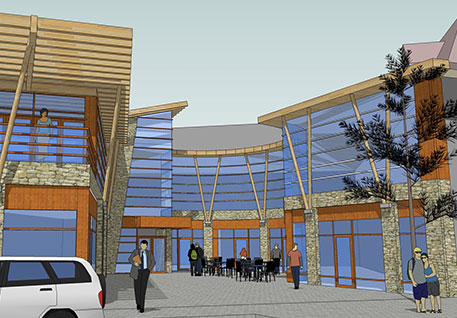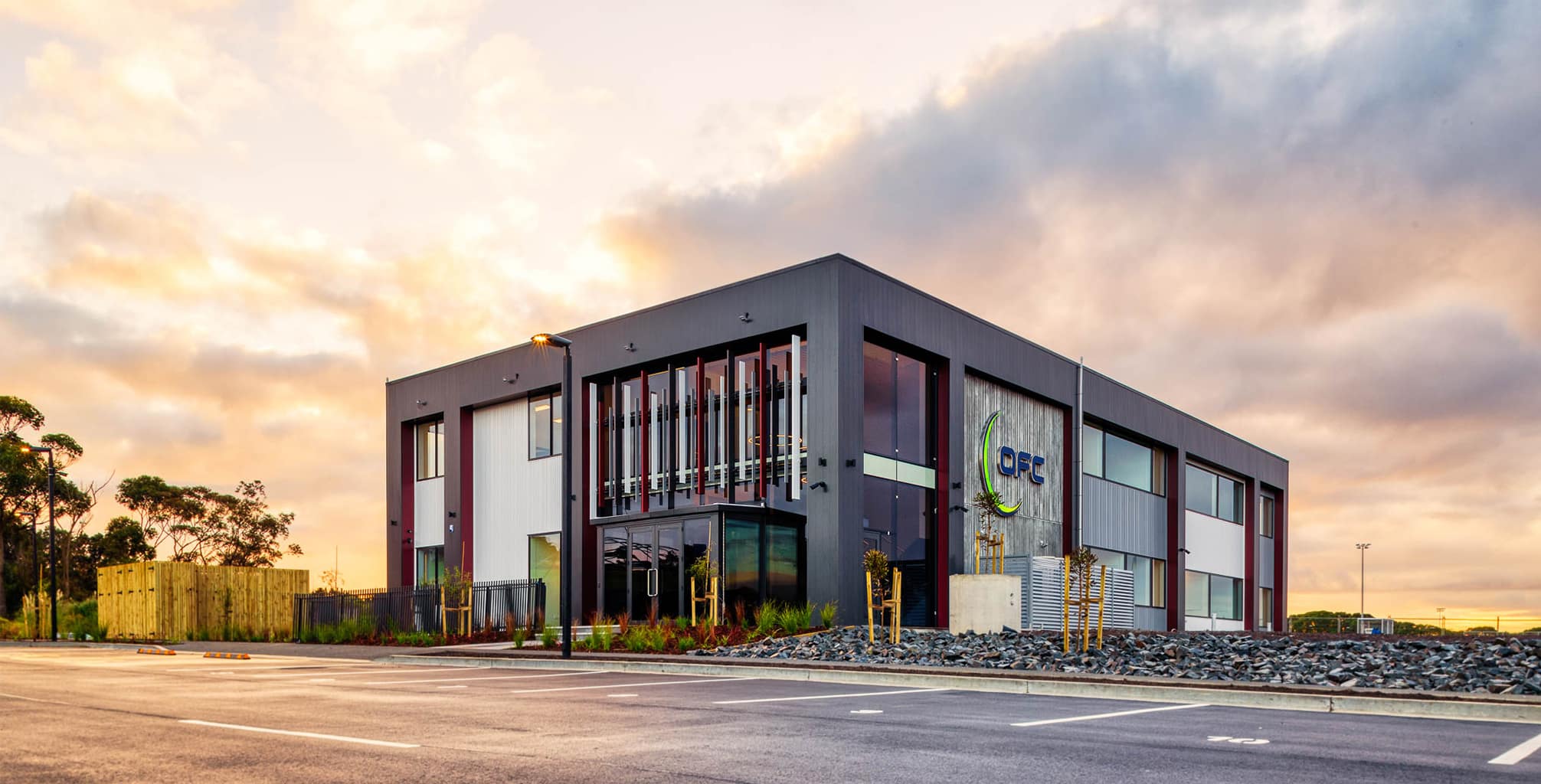Revealing the Comprehensive Solutions Provided by Commercial Architects for Modern Dope
Commercial Architects offer an important function in contemporary development tasks. They blend design looks with performance while adhering to regulatory needs. Their expertise prolongs past plain building, integrating sustainable techniques and ingenious modern technologies. As they navigate intricate zoning regulations, Architects team up with various stakeholders to bring visions to life. This diverse method raises inquiries regarding the evolving role of Architects in forming contemporary spaces and the effect of their deal with future growths.
Comprehending the Function of Commercial Architects in Modern Developments
In contemporary city landscapes, Commercial Architects play a critical role in forming practical and aesthetic spaces that fulfill diverse service needs. Their experience extends past mere style; they browse complicated zoning regulations, developing codes, and ecological policies. By teaming up with customers, they recognize certain needs, guaranteeing that each job aligns with the customer's vision while additionally thinking about practical aspects such as sustainability and cost-effectiveness. Commercial Architects are skilled at integrating innovative technologies and products right into their designs, boosting both the performance and power efficiency of buildings. They conduct detailed site evaluations to evaluate the prospective difficulties and possibilities presented by a place. Furthermore, efficient interaction with service providers and various other stakeholders is necessary, guaranteeing that the job advances efficiently from perception to completion. Inevitably, Commercial Architects contribute in creating spaces that not only meet sensible functions but likewise add to the total character and vibrancy of urban settings.
Idea Design: Changing Ideas Into Fact
Principle layout works as an essential phase in Commercial architecture, where cutting-edge design solutions emerge from creative thinking. This procedure counts on joint ideation, uniting diverse viewpoints to fine-tune and boost first principles. As concepts take shape, they transform from abstract ideas right into tangible building truths.
Innovative Layout Solutions
Transforming ideas right into fact is the hallmark of ingenious style options in Commercial design. These services blend creative thinking with performance, dealing with the unique demands of modern developments. By leveraging advanced modern technologies and lasting techniques, Architects craft rooms that are not only visually enticing however also efficient and versatile. Emphasis on individual experience drives the layout process, guaranteeing that atmospheres foster performance and cooperation. Each job gain from a tailored strategy, where principles are carefully established to reflect the client's vision while considering future patterns. Innovative layout remedies additionally prioritize adaptability, permitting adjustments gradually as company requirements evolve. Inevitably, these approaches boost the overall value of Commercial areas, making them essential in today's competitive landscape.

Joint Ideation Refine
Cooperation offers as the foundation of the ideation procedure in Commercial architecture, cultivating creative thinking and technology among varied stakeholders. Architects, customers, designers, and community members participate in vibrant discussions, guaranteeing that all point of views are thought about. This inclusive strategy allows for the expedition of numerous style concepts, urging special services that line up with the job's vision. Through workshops and brainstorming sessions, concepts advance and refine, changing first ideas into concrete layouts. Technology likewise plays a pivotal role, with tools such as Structure Details Modeling (BIM) promoting real-time partnership and modifications. Inevitably, this collective ideation procedure not only improves the design outcome but also grows a feeling of possession and financial investment among all celebrations entailed, leading to successful Commercial advancements.
Zoning Analysis: Browsing Laws and Conformity
As designers start on new jobs, understanding zoning laws is important to guaranteeing conformity and avoiding expensive hold-ups. Zoning analysis plays a crucial function in this process, as it entails reviewing regional zoning regulations that determine land use, building height, density, and obstacles. Commercial Architects have the knowledge to navigate these intricate regulations, assisting customers determine acceptable uses and any type of essential variations.
Lasting Style Practices: Structure for the Future
Sustainable style techniques are significantly essential in the domain name of Commercial architecture, especially as environmental worries remain to intensify. Architects prioritize environment-friendly products, energy-efficient systems, and layout approaches that lessen waste and ecological impact. Incorporating sustainable power resources, such as solar panels and wind generators, allows buildings to generate their own power and minimize dependence on fossil fuels.Furthermore, sustainable layout emphasizes the relevance of interior ecological top quality. This consists of using all-natural light, boosting air flow, and selecting non-toxic products to boost owner wellness and productivity. Green roofs and living walls are also popular features that contribute to biodiversity and city cooling.Additionally, Commercial Architects usually integrate water conservation strategies, like rain harvesting and drought-resistant landscaping. Via these cutting-edge methods, they produce areas that not only satisfy modern demands yet additionally cultivate a lasting future, addressing the growing need for liable growth in the contemporary world.
Project Monitoring: Ensuring Timely and Effective Execution
Effective project administration is necessary for guaranteeing that Commercial design projects are finished on time and within budget plan. This function incorporates internet a series of responsibilities, consisting of the coordination of various stakeholders, timelines, and sources. Commercial Architects utilize their expertise to develop thorough project plans that lay out important landmarks and deliverables, enabling systematic progress tracking.Regular communication amongst employee and customers is essential, cultivating openness and assisting in timely decision-making. Danger administration techniques are additionally used to recognize prospective obstacles early, enabling proactive services to be created. By utilizing sophisticated task administration devices, Architects can keep track of project performance in real-time, making modifications as needed to preserve performance.
Interior Decoration: Creating Functional and Aesthetic Spaces
Interior decoration plays an essential role in improving both capability and appearance within Commercial areas. Efficient area preparation can maximize operations and boost individual experience, while aesthetic design concepts contribute to a visually attractive environment - commercial architects. With each other, these components create spaces that are not only sensible but also inspiring
Area Preparation Efficiency
While taking full advantage of the energy of offered space, Commercial Architects prioritize room preparation effectiveness to create both functional and aesthetically pleasing settings. This approach entails careful analysis of the spatial design i was reading this to assure ideal use every square foot. Architects consider elements such as workflow, ease of access, and natural light to enhance use. By strategically placing furnishings, equipment, and workstations, they assist in activity and communication among users, promoting efficiency. Furthermore, zoning different areas for particular functions aids in taking care of noise and privacy, developing a harmonious atmosphere. Through reliable space preparation, Commercial Architects can change constraints into possibilities, making certain that each room satisfies the varied requirements of its owners while adhering to regulative requirements and market standards.
Visual Layout Concepts
Aesthetic style principles play a crucial duty in forming atmospheres that are not just useful but additionally visually appealing. These concepts direct Commercial Architects in producing spaces that reverberate with individuals while boosting brand identification. Crucial element consist of equilibrium, percentage, and harmony, which interact to produce a cohesive look. Color pattern and products are thoroughly selected to evoke wanted feelings and support the overall style. Furthermore, illumination plays a critical function, influencing mood and presence while highlighting architectural attributes. By incorporating these concepts, Architects guarantee that spaces are not only useful yet also inviting and inspiring. Eventually, efficient visual visit this site right here layout fosters a favorable customer experience, urging interaction and satisfaction in Commercial atmospheres.
Collaboration With Stakeholders: Promoting Successful Collaborations
Successful collaborations in Commercial style rest on effective collaboration with stakeholders, guaranteeing that every voice is heard and valued. This collaborative technique includes engaging various celebrations, consisting of clients, contractors, and area participants, throughout the layout and development procedure. By promoting open interaction, Commercial Architects can attend to problems, gather insights, and straighten the task's vision with stakeholder expectations.The combination of diverse viewpoints boosts imagination and development, resulting in even more useful and cosmetically pleasing layouts. Routine conferences, feedback sessions, and workshops promote this discussion, enabling Architects to adapt their strategies in action to stakeholder input. Furthermore, developing trust fund through transparency and accountability enhances these collaborations, leading to a smoother job execution.Ultimately, the success of modern advancements depends upon the Architects' ability to navigate and integrate varying interests, developing a collective environment that advertises shared goals and common success.
Often Asked Concerns
Just How Do Commercial Architects Manage Spending Plan Constraints Throughout a Job?

What Kinds of Software Program Do Commercial Architects Generally Utilize?
Commercial Architects typically utilize software program such as AutoCAD for drafting, Revit for Building Info Modeling, SketchUp for 3D modeling, and task monitoring devices like Microsoft Project to boost collaboration and improve workflows throughout the design procedure.
Can Commercial Architects Help With Acquiring Funding for Projects?
Commercial Architects can assist in acquiring funding for jobs by preparing detailed propositions, aiding to verbalize layout visions, and giving economic projections that can enhance the chance of protecting necessary financing from financiers or banks.
Just How Do Architects Guarantee Safety During the Building And Construction Refine?
Architects assure safety and security during building and construction by carrying out extensive design requirements, coordinating with designers, carrying out normal website inspections, adhering to neighborhood policies, and cultivating interaction amongst all stakeholders to mitigate threats and promote a secure workplace.
What Ongoing Support Do Architects Offer After Job Conclusion?
After task completion, Architects supply ongoing assistance with maintenance appointments, efficiency evaluations, and design adjustments. They assure buildings fulfill progressing demands, address possible problems, and keep conformity with regulations, fostering a long-term relationship with clients.